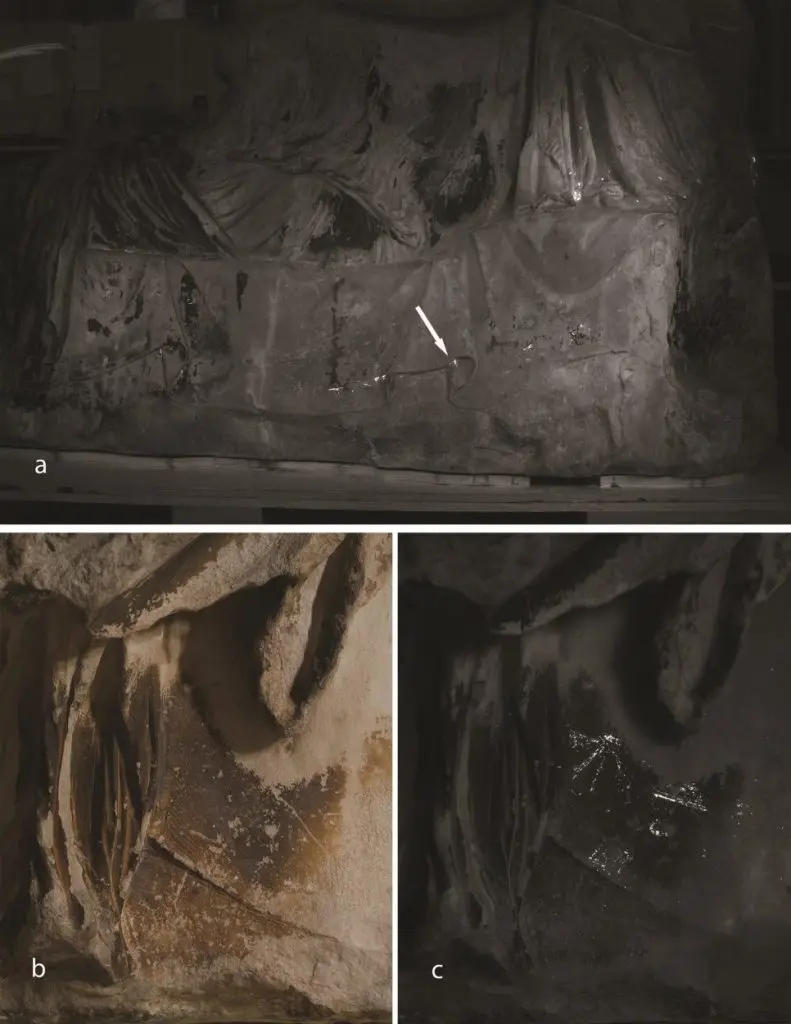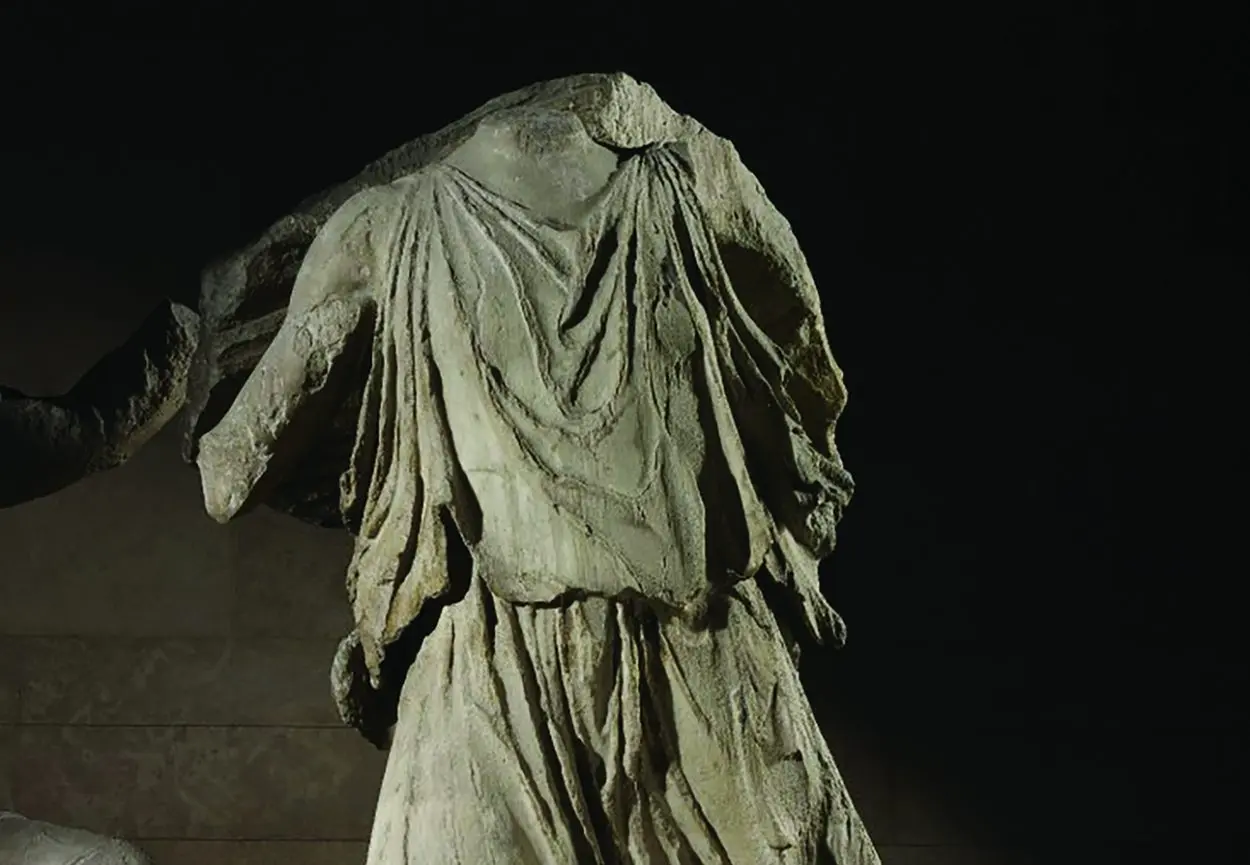Experts have used digital imaging techniques to identify traces of paint and carving techniques used on the Parthenon Sculptures at the British Museum.
The Parthenon Sculptures are a collection of decorative marble sculptures taken from the temple of Athena (the Parthenon) on the Acropolis in Athens.
Made between 447 BC and 432 BC, Lord Elgin (the British Ambassador to the Ottoman Empire), was granted a permit (firman) between 1801 and 1805 to remove around half of the remaining sculptures at the Parthenon for transportation to Britain, a move that today is highly contested by Greek authorities who have formally requested for their return.
It has long been assumed that the sculptures were left unpainted, however, using visible-induced luminescence imaging, the researchers have been able to identify microscopic traces of an Egyptian blue pigment on the sculpture’s garments. Egyptian blue is a man-made pigment composed of calcium, copper and silicon, that was commonly used in Ancient Greece and Roman, and even as far back as 3,000 BC in Egypt.

According to a study, published in the journal Antiquity: “Small traces of white and purple were also detected on the sculptures. True purple pigment was very valuable in the ancient Mediterranean; it was produced from shellfish, but the Parthenon purple apparently was not. The exact nature of the purple remains unclear, but classical texts refer to recipes to make non-shellfish purple.”
A closer analysis has revealed that the pigments were also used to create elaborate floral patterns and other designs on the garments of the sculpted figures, reflecting the rich and elegant nature of classical monuments.
The evidence pertaining to the carving suggests an absence of any discernible technical manipulation between the marble’s surface finish and the paint application. Instead, it points to the sculptors’ emphasis on faithfully reproducing the intended forms, such as wool, linen, and skin, without employing specific surface treatments like keying or abrasion to enhance paint adhesion.
“Even if the surfaces were not explicitly prepared for the application of paint, however, carving and colour were unified in their conception. The Parthenon artists were sympathetic to the final intended polychrome sculpture providing surfaces that evoked textures similar to those of the subjects represented. It is likely that the painters took advantage of these mimetic surfaces to achieve the final effects” said Dr Wootton from King’s College London.
“The elegant and elaborate garments were possibly intended to represent the power and might of the Olympian gods, as well as the wealth and reach of Athens and the Athenians, who commissioned the temple,” says Dr Giovanni Verri, from the Art Institute of Chicago, and formerly a Mellon Fellow at the British Museum.
Verri adds: “The painting is certainly contemporary to the building, as we could see clear traces at the back of the sculpture. After being placed on the building, the back would have no longer been accessible. We can only speculate as to why they painted the back”.
https://doi.org/10.15184/aqy.2023.130
Header Image Credit : Trustees of the British Museum





